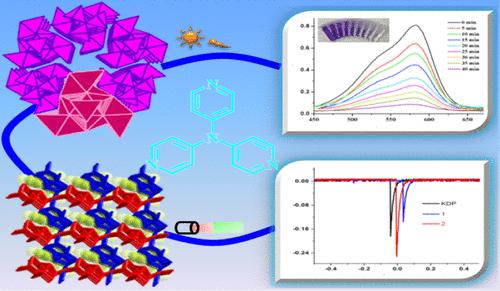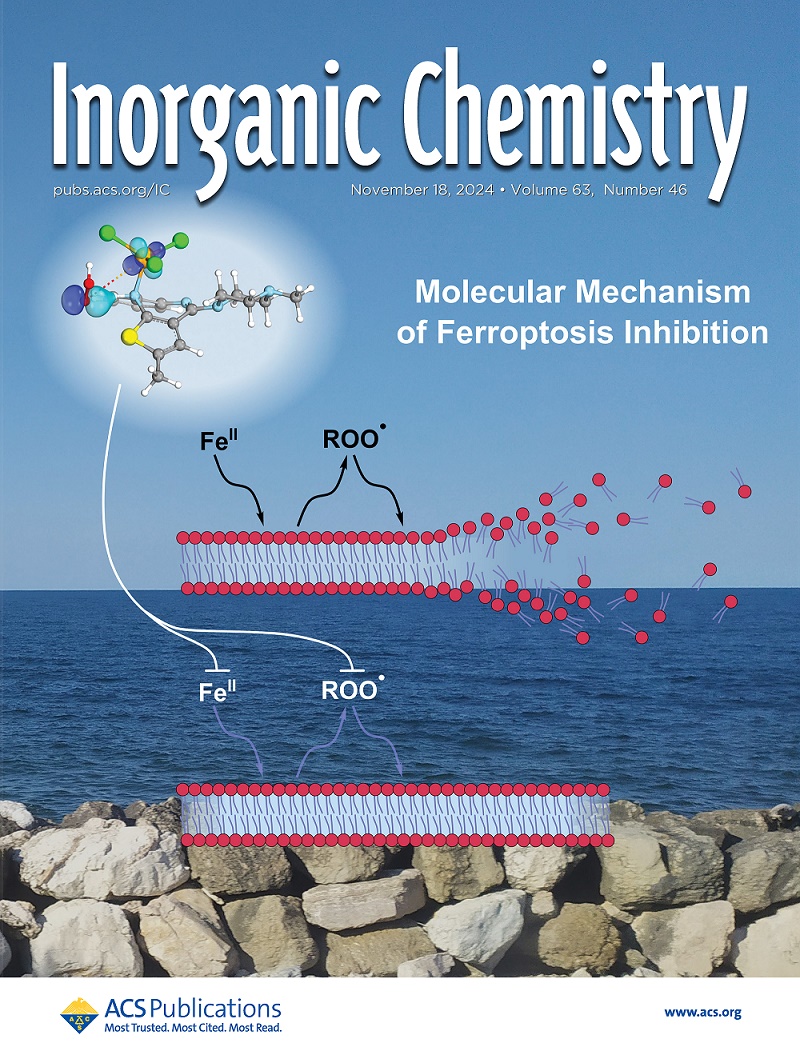Template Synthesis of Iodocuprate and Iodoargentate with Photocatalytic Activity and Second Harmonic Generation Efficiency
IF 4.3
2区 化学
Q1 CHEMISTRY, INORGANIC & NUCLEAR
引用次数: 0
Abstract
In virtue of the cationic tri(pyridin-4-yl)amine (TPA) derivatives acting as the templates, two iodometallates, [Me3HTPA]2[CuI3][Cu10I16] (1) and [Me3TPA][Ag5I8] (2), were constructed with different architectures. Compound 1 features a discrete [Cu10I16]6– cluster, which is further combined with [CuI3]2– and two [Me3HTPA]4+ moieties through electrostatic interactions to result in a 3D supramolecular framework. Two types of infinite Ag–I chains with different orientations are formed in iodoargentate 2, and adjacent chains, together with in situ N-methylated cations, are further aggregated into a final 3D supramolecule. The syntheses, crystal structures, and optical properties have been studied. Notably, compound 1 displays efficient visible-light-driven photocatalytic performance for the degradation of dye pollutants. The catalytic mechanism was investigated through radical trapping experiments as well as theoretical calculations. Moreover, both the iodocuprate and iodoargentate hybrids exhibit second harmonic generation (SHG) effects, which are comparable to and even better than that of KH2PO4, indicating that the iodometallate hybrids templated by TPA-based cations could potentially serve as new candidates for second-order nonlinear optics (NLO) materials.

模板合成具有光催化活性和二次谐波发生效率的 Iodocuprate 和 Iodoargentate
以阳离子三(吡啶-4-基)胺 (TPA) 衍生物为模板,制备出了具有不同结构的两种碘金属盐--[Me3HTPA]2[CuI3][Cu10I16] (1) 和 [Me3TPA][Ag5I8] (2)。化合物 1 具有一个离散的 [Cu10I16]6- 簇,通过静电作用进一步与 [CuI3]2- 和两个 [Me3HTPA]4+ 分子结合,形成一个三维超分子框架。碘代银根酸盐 2 中形成了两种不同取向的无限 Ag-I 链,相邻链与原位 N-甲基化阳离子一起进一步聚集成最终的三维超分子。我们对这些化合物的合成、晶体结构和光学特性进行了研究。值得注意的是,化合物 1 在降解染料污染物方面具有高效的可见光光催化性能。通过自由基捕获实验和理论计算研究了催化机理。此外,碘琥珀酸盐和碘精氨酸盐混合物均表现出二次谐波发生(SHG)效应,其效果与 KH2PO4 相当,甚至优于 KH2PO4,这表明以 TPA 基阳离子为模板的碘金属盐混合物有可能成为二阶非线性光学(NLO)材料的新候选材料。
本文章由计算机程序翻译,如有差异,请以英文原文为准。
求助全文
约1分钟内获得全文
求助全文
来源期刊

Inorganic Chemistry
化学-无机化学与核化学
CiteScore
7.60
自引率
13.00%
发文量
1960
审稿时长
1.9 months
期刊介绍:
Inorganic Chemistry publishes fundamental studies in all phases of inorganic chemistry. Coverage includes experimental and theoretical reports on quantitative studies of structure and thermodynamics, kinetics, mechanisms of inorganic reactions, bioinorganic chemistry, and relevant aspects of organometallic chemistry, solid-state phenomena, and chemical bonding theory. Emphasis is placed on the synthesis, structure, thermodynamics, reactivity, spectroscopy, and bonding properties of significant new and known compounds.
 求助内容:
求助内容: 应助结果提醒方式:
应助结果提醒方式:


